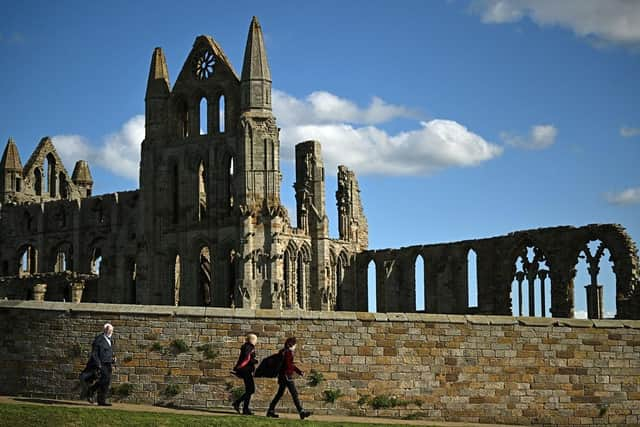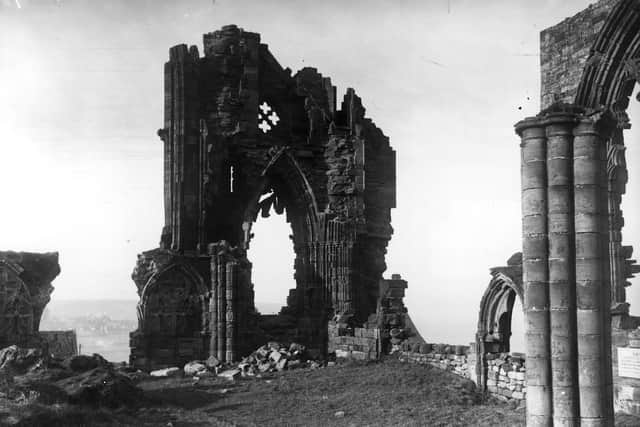Whitby Abbey: The rich history of the seventh century former monastery turned abbey church on the Yorkshire coast including fascinating photos of Whitby Abbey through the years
and live on Freeview channel 276
Whitby Abbey is located in the coastal town that inspired Bram Stoker’s 1897 novel Dracula, the abbey is also referenced in Mina Harker’s diary in the novel. Count Dracula is described as a creature resembling a large dog which came ashore at the headland and runs up the 199 steps to the cemetery of St Mary’s Church with a backdrop of the Whitby Abbey ruins.
The abbey and its possessions were confiscated by the crown under Henry VIII during the Dissolution of the Monasteries between 1536 and 1545. Since then, the ruins of the abbey have been used by sailors as a landmark at the headland.
Advertisement
Hide AdAdvertisement
Hide AdSince the 20th century, the ruins of the church have been designated as a Grade I listed building and are in the care of English Heritage and the site museum is located in Cholmley House. Here is everything you need to know about the rich history of the former monastery.


History of Whitby Abbey
The ruins of the abbey are among the most popular and visited of North Yorkshire. Whitby Abbey was the first monastery established and founded in around 657 AD and became one of the most important religious centres in the Anglo-Saxon world.
It was founded by the Anglo-Saxon King of Northumbria, Oswy (Oswiu) as Streoneshalh (the original name for Whitby), who appointed Lady Hilda, abbess of Hartlepool Abbey and grand-niece of Edwin, the first Christian king of Northumbria, as founding abbess.
In 664, it was the backdrop for the Synod of Whitby, a landmark in the history of the church in England. The headland is now dominated by the shell of the 13th century church of the Benedictine abbey founded after the Norman Conquest.
Advertisement
Hide AdAdvertisement
Hide Ad

The first existence of the Abbey under St Hilda lasted for 200 years, when the North-East of England was invaded by the Danes, who were more commonly known as Vikings. The Abbey suffered great destruction during the invasion and led to its downfall. The following 200 years at the Abbey were derelict, deserted and destroyed.
The Abbey was resurrected in the 11th century shortly following the Norman Conquest and it is these ruins that remain today.
In recent history, the Abbey has attracted more than 150,000 visitors a year.
Comment Guidelines
National World encourages reader discussion on our stories. User feedback, insights and back-and-forth exchanges add a rich layer of context to reporting. Please review our Community Guidelines before commenting.
